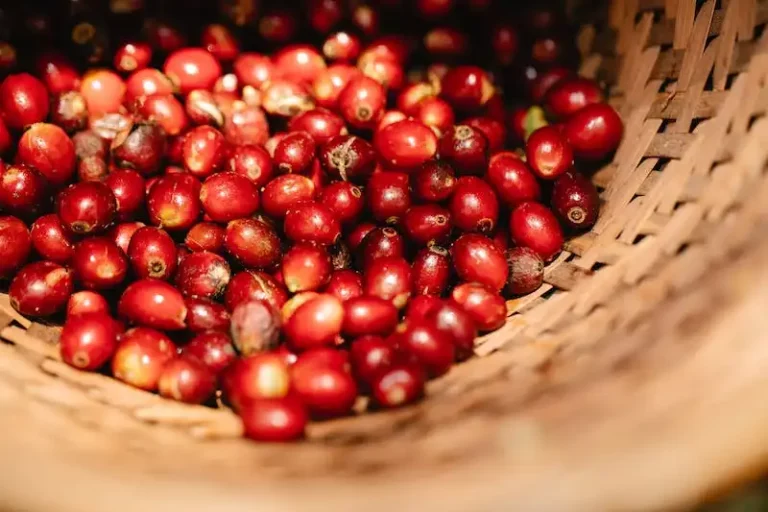If you’re looking to add a touch of tropical beauty to your home, propagating Dieffenbachia is a great option. This gorgeous plant, also known as Dumb Cane, is characterized by its large, leafless stems and vibrant green foliage. While Dieffenbachia can be bought fully grown from a nursery, propagating it allows you to save money and enjoy the satisfaction of growing your own plant from start to finish.
Dieffenbachia plants are fairly easy to propagate, and there are several ways to do so. One popular method is by using stem cuttings, which involves taking a small section of a healthy stem and encouraging it to grow roots. Another option is to propagate Dieffenbachia through division, where you carefully separate a mature plant into smaller sections, each with its own roots and stems. No matter which method you choose, following a step-by-step guide is essential to ensure success.
When propagating Dieffenbachia, keeping the right temperature and humidity is important for the plant’s overall health. Dieffenbachia plants prefer a warm and humid environment, so make sure to place your new cuttings or divided plants in a location that meets these conditions. Using a peat-based soil mix can also help to keep the moisture levels consistent. Watering your Dieffenbachia properly is crucial as well. The plant needs to be kept consistently moist, but avoid overwatering as it can lead to root rot.
Pruning is another key practice in successfully propagating Dieffenbachia. After new roots have formed and the plant is established in its new pot, you can carefully prune the leaves to encourage fuller growth. It’s important to remember that the leaves of Dieffenbachia plants are toxic if ingested, so always use caution and avoid contact with your mouth or eyes while handling them. If you have any concerns about pest control, you can find online resources that provide expert advice on keeping your Dieffenbachia free from common pests.
In conclusion, propagating Dieffenbachia is a rewarding way to bring the beauty of the tropics into your home. Whether you choose to grow it from stem cuttings or by dividing a mature plant, following a step-by-step guide and providing the right conditions for growth are key. With proper care and attention, your new Dieffenbachia plants will thrive and become a stunning addition to any room or garden.
How to care for Dumb cane Dieffenbachia Care tips for houseplants
If you’ve recently propagated a Dieffenbachia, or are considering getting one for your home, this care guide will provide you with essential tips to ensure your plant thrives in its new environment. Dieffenbachias, also known as Dumb canes, are tropical houseplants known for their beautiful leaves and easy-care nature. By following these care tips, you’ll be able to keep your Dieffenbachia healthy and happy.
1. Selecting the right Dieffenbachia
- When buying a new Dieffenbachia, choose a plant that looks healthy with no signs of damage or disease.
- Look for plants with vibrant, green leaves and no yellowing.
- Avoid plants that have wilting leaves or are drooping, as this may be a sign of improper care.
2. Providing the right environment
- Dieffenbachias prefer temperatures between 60 to 75 degrees Fahrenheit (15 to 24 degrees Celsius).
- Keep your plant in a location with bright, indirect light, away from direct sunlight.
- Dieffenbachias thrive in humid environments, so consider placing a humidifier nearby or misting the leaves regularly.
3. Watering and fertilization
- Water your Dieffenbachia thoroughly, allowing the top inch of soil to dry out before watering again.
- Avoid overwatering, as this can lead to root rot.
- Fertilize your plant every four to six weeks during the growing season with a balanced houseplant fertilizer.
4. Pruning and propagating
- Prune your Dieffenbachia to remove any dead or yellowing leaves.
- If your plant becomes too leggy, you can cut off the top stem and propagate it to start a new plant.
- Propagate Dieffenbachias by taking stem cuttings with at least two nodes and placing them in water until roots develop.
5. Common care questions
Here are some common questions about caring for Dieffenbachias:
- Why are the leaves of my Dieffenbachia turning brown? This could be due to underwatering or low humidity. Ensure you’re watering your plant properly and consider increasing humidity levels.
- How do I get rid of aphids on my Dieffenbachia? Gather ladybugs or use an organic insecticidal soap to control aphids.
- Can I transplant my Dieffenbachia outside in the garden? Dieffenbachias are tropical plants and should be kept indoors. Transplanting them outside may result in damage or death.
By following this care guide, you’ll be able to keep your Dieffenbachia healthy and thriving. Remember that each plant is unique, so it’s important to observe the specific needs of your plant and make adjustments accordingly. If you’re ever unsure about how to care for your Dieffenbachia, consult an online gardening resource or reach out to a plant care expert.
Dieffenbachia Care: 10 Expert Tips for Growing it Successfully
Dieffenbachia is a tropical beauty that can add a touch of elegance to any room. To ensure your dieffenbachia plants grow to their full potential and remain healthy, here are 10 expert tips for successful care:
1. Light: Dieffenbachias thrive best in bright, indirect light. Place them in a room where they can receive moderate levels of sunlight, but be sure to rotate the plant every few weeks to ensure even growth.
2. Temperature: Dieffenbachias prefer warm temperatures between 65°F and 75°F (18°C and 24°C). Avoid placing them in drafty areas or near heaters or air conditioning vents.
3. Humidity: Dieffenbachias love humidity, so try to maintain a humid environment around the plant. You can mist the leaves regularly or place a tray of water nearby to increase humidity levels.
4. Watering: Water your dieffenbachia when the top inch of soil feels dry to the touch. Be careful not to overwater as this can lead to root rot. Ensure the pot has drainage holes to prevent water logging.
5. Fertilization: Feed your dieffenbachia with a liquid fertilizer every month during the growing season (spring and summer). Dilute the fertilizer according to the instructions on the packaging.
6. Pruning: If your dieffenbachia becomes too tall or leggy, you can prune it back to encourage bushier growth. Simply cut off the stems just above a leaf node using sterilized pruning tools.
7. Placement: Keep your dieffenbachia away from pets and children as it can be toxic if ingested. Consider placing it on a high shelf or using a hanging basket to ensure its safety.
8. Pest Control: Keep an eye out for aphids and spider mites, which can damage the leaves. If you notice any infestation, wash the leaves with a mild soap solution and rinse thoroughly.
9. Propagation: Propagating dieffenbachias is relatively easy and can be done by stem cuttings. Take a cutting just below a leaf node and place it in a well-draining potting mix. Keep the soil moist and within a few weeks, new shoots should start growing.
10. Time to Repot: As dieffenbachias grow, they may outgrow their pots. When the roots start poking out of the drainage holes, it’s time to repot the plant into a slightly larger container with fresh, peat-based potting mix.
By following these expert care tips, you can ensure your dieffenbachias thrive and bring their beauty into your home for years to come!
Dieffenbachia Plant Care Tips
Dieffenbachia plants, also known as Dumbcane, are tropical beauties that can thrive in your home with proper care. Here are some essential tips to ensure your Dieffenbachia plants stay healthy and vibrant:
| Water: | Water your Dieffenbachia plants thoroughly, but allow the top inch of soil to dry out before watering again. Be careful not to overwater as this can cause root rot. |
| Lighting: | Place your Dieffenbachia plants in a sunny spot, but be mindful of direct sunlight as it can scorch the leaves. Partial shade or filtered light is usually best. |
| Humidity: | Dieffenbachia plants prefer a high level of humidity. You can increase humidity around the plant by placing a tray with water nearby or by using a humidifier. |
| Fertilizing: | Feed your Dieffenbachia plants every two weeks during the growing season with a balanced, water-soluble fertilizer. Follow the instructions on the packaging for proper dosage. |
| Propagation: | If you want to propagate your Dieffenbachia plants, you can do so by stem cuttings. Take a stem cutting with at least two leaves and place it in a peat-based rooting medium. Keep the soil moist and provide warmth for successful rooting. Within a few weeks, roots should develop, and you can then transplant the new plant. |
| Pest Control: | Common pests that can affect Dieffenbachia plants include aphids and spider mites. If you notice any signs of pest damage, such as discolored or distorted leaves, remove the pests by gently washing the foliage with a soapy water solution. |
| Repotting: | Repot your Dieffenbachia plants every 1-2 years in a slightly larger pot. Use a well-draining potting mix and be careful while handling the plant since the sap can cause skin irritation. |
| Pruning: | To keep your Dieffenbachia plants looking their best, you can prune them to remove any yellow or brown leaves. You can also shorten the tall canes to encourage bushier growth. |
| Common Questions: | If you have any questions or need further assistance, there are online care guides and FAQs available. Don’t hesitate to reach out to experts or fellow plant enthusiasts for advice and tips. |
By following these Dieffenbachia plant care tips, you’ll ensure that your plants stay healthy and thrive in your home setting. Enjoy the beauty of these tropical wonders!

